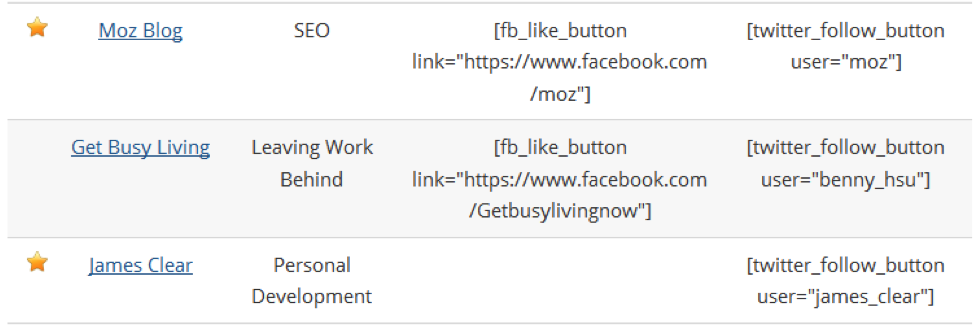 Every blogger has experienced this: You take time to write a blog post, read through it and feel like it is the perfect piece. So you hit the publish post button, expecting amazing replies, comments and shares. Then suddenly, reality hits you. None of your expectations were realized.
Every blogger has experienced this: You take time to write a blog post, read through it and feel like it is the perfect piece. So you hit the publish post button, expecting amazing replies, comments and shares. Then suddenly, reality hits you. None of your expectations were realized.
Despite your effort, no one took time to comment, let alone read the post. Well, this is somewhat understandable, because there are many blogs in your niche competing for readership from the same people.
My colleagues and I have had the same experience and taken time to understand how we can increase our blog’s traffic. Could it be that we are using common tricks that everyone uses? Using common practices puts all of us on the same playing field.
The same goes for you, so here’s what this means for you:
You should improve your content marketing tactics to drive more traffic to your blog. In addition to optimizing your blog content, refrain from using the common and basic strategies and begin implementing rare but highly successful tactics instead.
Here are four ways to do this:
Get Influencers to Write For You
You could think that this is common knowledge. While you are right to some extent, the difference is how you choose influencers and use them. Generally, you approach the biggest players in your niche and ask them to be contributors on your blog. Along with their excellent traffic, they bring their massive following.
It is a fact that an influencer audience does not necessarily mean influence. It could only be a sign of awareness. This is where most bloggers get it wrong. They are not keen on the type and level of influence possess by their preferred influencer. Worse still, some influencers do not necessarily associate well with your niche.
I learned—and successfully tried—four ways of incorporating valuable influencers in my blogging strategy. They are:
#1: Do an Expert Roundup
I read about a blogger, Dave Schneider, who did an expert roundup. As a result, that post received almost 400 shares. That was impressive! Now let’s get to the details.
Here is exactly what he did:
He invited nearly 40 experts to speak exhaustively about their first sale. These experts spoke in detail causing the post to contain over 12,000 words. But Dave was smart; he worked on blog presentation to lure his traffic to read and share the content. Additionally, he gained more traffic by each of these experts sharing their features on their pages.
Instead of presenting the post (which he never wrote himself by the way) in prose form, he separated each paragraph with an expert story and photo. The influencers did their part by bringing traffic, and Dave ensured that he enticed the acquired traffic to stay, read on and engage.
 I noticed something else: The topic Dave covers on his blog generally is on self-made businesses. Therefore, creating an expert roundup on how established businesses made their first sale was very relevant blog content for his niche.
I noticed something else: The topic Dave covers on his blog generally is on self-made businesses. Therefore, creating an expert roundup on how established businesses made their first sale was very relevant blog content for his niche.
Here are six general tips we all learn from Dave:
- Research and find contacts on hot influencers IN your niche.
- Prep them by contacting them.
- Organize them into a spreadsheet to mark progress with each. (Remember their individual contributions matters, so don’t sideline anyone.)
- Take time and ask the important questions which are relevant to your niche.
- Build the post and organize it in an easily readable way, in a way that one can even quickly scan through and get important information.
- Publish and share the posts. (Ensure that you know and understand optimal times to share to different social media platforms.)
#2: Do Reverse Guest Posting
As a blogger, you are sometimes invited to guest blog at a particular website. You might get paid to do this and possibly be able to market yourself in the process.
As I discovered, a better way exists: Instead of doing it the usual way (where you write the guest posts), reverse roles and invite influencers to contribute guest posts to your blog. To do this, simply research your niche area, and find the best people you can invite to write for your blog.
These are the three main advantages to this tactic:
- You have total control on the terms of engagement.
- You get the long-term organic benefit of the blog post, because it is published on your website.
- The influencer will write for you, and, while marketing himself by sending traffic to your website, you earn blog traffic by default.
#3: Do an Interview
My colleague and I recently realized that we spend most of our days scratching our heads trying to figure out new topics for our blog as we plan for our editorial calendar. As a matter of fact, our editorial calendar is based on only offering solutions to new problems in our niche.
Then we got the idea of doing at least one interview per day! An interview is a very rich way of varying up content.
It gets even better: If you write a blog title that discusses the key aspects of a relevant influencer, this will increase people’s curiosity, thus driving up traffic to your blog. Work is also easier on your part. All you need to do is develop questions and be an active listener during the interview to develop necessary follow up questions.
Remember that influencers always look for ways to expand their audience. This means, as your weekly features get more popular, you will begin to receive feature requests. This will make you choosier on the quality of influencers to include.
#4: Use a Top List Post
I have found out that ranking your influencers on a certain criteria is effective for a business. Sure enough, there are key metrics that matter for influencers, a skill that Tom Ewer seems to have perfected.
He wrote a top list post that he updates every year. Well, everyone does this, right? I thought so until I had a light bulb moment with my colleague.
If you don’t know what a top list post is, let me explain. It’s a post that consists of a list of top posts or blogs for that niche.
Tom was strategic on how he used his top list post to market his content and drive traffic to his blog, which garnered over 55 comments and 318 Facebook shares. He created a custom image that he sent to winners who made it to his post. These winners would then use these images on their website’s side bar or press page with a link back to Tom’s blog.
The result: Tom gained more organic traffic hence the massive readership his blog receives.
Here is part of the list:
In general, always ensure that you get relevant influencers like we have discussed. Also, make sure that they are ready and want to share and link to your content.
Optimize For Social Media
My colleague and I did a test to see how businesses were sharing their content on social media. We realized that content just before the “see more” or ‘”click link” buttons greatly influenced if we would actually click on the link or not.
In other words, sharing links on social media is not as easy as you might assume. Some of you just copy and paste your blog link and ask people to read. No! This never works.
A study by Siege-Media actually proved us right. It showed that 73% of company blogs were not optimizing their shared links for social media. As a result, they were getting much less blog traffic than possible.
On Twitter, for example, most bloggers don’t use the Tweet Button syntax button on blogs correctly. Instead of using the default message that the button gives you, you need to put in a little more work to ensure that your work is optimized.
Here’s one rule to follow to optimize your links for sharing:
#1: Analyze The Tweet Structure
As earlier discussed, the syntax tool will always give you a default message as defined for the business.
Here is how one post I picked from Siege would look like.
The message has several advantages. First of all, it has a descriptive title and also includes the business’s official twitter account. In content marketing, this is not enough. There needs to be a call-to-action. The screenshot above shows that there are 51 characters left.
Use that space to customize your message and ensure that your social media audience understands what you need them to do.
Also note that when editing this tweet you must make sure you only include the post title and not the entire title tag. Adding the title tag only takes up valuable space and also dilutes the message.
People also make the mistake of mentioning and adding irrelevant twitter handles to the post. From the post above, you can easily notice that the business only included its twitter handle. Do you know why? Adding another business could potentially cause your audience to divert attention.
Optimize Your Meta Tags and Meta Descriptions
Most bloggers stopped caring about meta descriptions when Google announced that meta descriptions are not useful for SEO. After all, why include it when the extra work might not enhance your marketing? I also believed this school of thought until I found out that Google uses Search Engine Results Pages (SERP) click-through rate as part of the algorithmic ranking process. Then things got serious.
You cannot let Google do the work for you by scanning through your content and returning a snippet that is relevant to a search. You definitely want more. As a matter of fact, just like me, you want a method that will bring out your content, which is related to what searcher are looking for,and cause them to visit your site.
In addition to increasing your ratings, having a meta description is actually your last pitch to convince traffic to visit your site. You need to have a high click-through rate and get insightful engagement from your site visitors.
So, here is how you can use meta descriptions to increase your blog traffic by 286%.
#1: Research On Websites on The SERP You Want To Rank For
The easiest way to know what keywords to use is to research what internet users look for, as well as what keywords currently high-ranking websites use.
Personally, I take time and put myself in the user’s shoes. What questions would I be asking? How would I be asking them? Would I use long descriptions or would I be short and precise? While doing this, I normally jot down my thoughts to sift out recurring and similar keywords.
After this, I usually take these keywords and put them in the search engine to see what kind of results I get. This process reveals to me the top 10 websites, as ranked by Google for the particular keywords.
That’s not enough. I also look through related searches to have a better idea of what people might ask, based on my target keywords. While looking through the websites, I also try to see how their meta descriptions are structured and pay attention to those that answer my search queries.
This information, coupled with what I find out to be the similarity in top websites, helps me tweak my keywords for higher effectiveness.
#2: Use Keyword-Rich Meta Descriptions
Searchers are more inclined to click on a meta description that features their target keywords. Follow the steps above on how to arrive at great keywords.
#3: Avoid Passive Meta Descriptions
Your readers want active solutions not passive descriptions of their problems. Instead of speaking in passive voice, speak in active speech that immediately shows readers there is a benefit in clicking your link, which will, of course, discuss their problems while giving accurate and viable solutions.
This business accurately explains this concept for us.
 #4: Ensure the Meta Description Has Less That 155 Characters
#4: Ensure the Meta Description Has Less That 155 Characters
This is a meta description not a blog post. Write a paragraph that is short and straight to the point, giving your readers enough information to lure them to click on your blog’s link. Failure to include a short meta description affects your posts in a negative way, because search engines cut off information after the 155 character mark is reached. Woe unto you if you were not convincing enough within the first lines.
Final Thoughts
Blogging is one of the most used marketing methods by businesses and creatives alike. For you to stand out from the pack of other authors and bloggers, you need to do the unusual by discovering what mistakes your competitors are making and capitalizing on them. That way, you will market your content better and increase blog traffic to your site.
About the Author
 Mike Dane is a digital marketing professional currently working as a PR manager at TruConversion.com. He truly loves online marketing and anything digital. He is very focused on his clients. Once he starts work, he is fully committed to his duties and responsibilities at that company.
Mike Dane is a digital marketing professional currently working as a PR manager at TruConversion.com. He truly loves online marketing and anything digital. He is very focused on his clients. Once he starts work, he is fully committed to his duties and responsibilities at that company.
Photo courtesy of pathdoc|Fotolia.com.




Thanks! It’s all helpful to me as I’m starting out. Wish me luck!==Lisa
Just setting up my web site and appreciate strong information that cuts to the needed results.